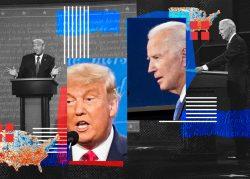A Trump-era tax incentive was meant to drive investment into parts of the country that were struggling economically. Spoiler alert: It didn’t, and President Joe Biden’s administration is weighing what it wants to do about the program.
For a recently released study on the program, researchers at the University of California, Berkeley, looked at 2019 investment figures for the 8,000 census tracts designated by state officials as Opportunity Zones. They found that only 16 percent received any investment that year, the New York Times reported.
Most of the capital was concentrated in a handful of zones, with rural areas receiving little to no investment. Investors instead focused on real estate, construction and finance, largely in areas with fewer elderly and non-white residents and higher incomes, the publication reported.
It’s not the first study to come to this conclusion: In 2020, an analysis from the Urban Institute found that Opportunity Zones have largely failed to promote investment in local small businesses, create jobs or boost the development of affordable housing in low-income neighborhoods across the United States.
The Opportunity Zone program was a part of Trump’s 2017 tax overhaul, which the Biden administration vowed to reform, according to the publication. The question now is: How?
Read more


Proponents of the program suggest that Trump-era regulations will pave the way for larger and more diverse investments in the coming years. But both critics and supporters say the Biden administration should work with Congress to remedy its issues and drive investment into the areas not currently benefiting from it — rural, suburban and urban.
A group of businesses, including Opportunity Zone investors, recently sent a letter to the Biden administration, pushing for measures that include more transparent reporting and working with the Treasury Department on funding impoverished areas.
On the campaign trail, Biden promised to improve the zones by requiring more disclosure by investors to track their effects on the communities they are meant to help, the publication reported. Another question is whether the program is awarding tax breaks to projects that would have happened without it.
The Treasury Department has issued one regulation governing the zones, but the White House has been prioritizing other initiatives, including a $2.3 trillion infrastructure package.
[NYT] — Cordilia James
